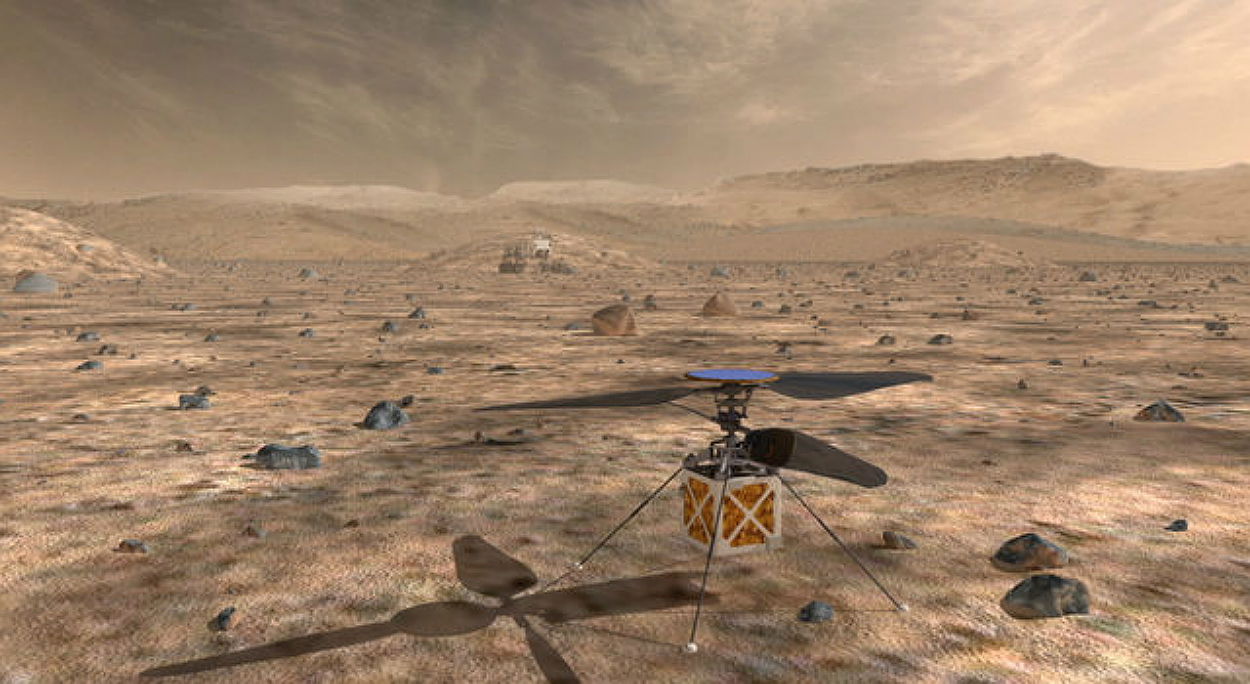NASA helicopters on the red planet in 2020

The US Aeronautics and Space Administration (NASA) has announced that they are using a small, autonomous aircraft that will travel with the Mars mission, scheduled for launch in July 2020 to March. The design of this aircraft has started since August 2013 and the team has been designing, testing and experimenting. The design was completed at a weight of less than 1.8 kg, and its double blades rotated in the thin Martian shell at 3,000 revolutions - 10 times the rate of the helicopter on Earth. "The idea of a helicopter flying over the Red Planet will be exciting because that mission will help us discover that planet in an easier way," says NASA director Jim Pridenstein.
The aircraft has the built-in capabilities required for operation and includes: solar cells to charge batteries - Li-ion - and a heating system to keep them warm at night. It is reported that this plane recorded its highest altitude on Earth with a height of 40,000 feet. When it flies on the surface of Mars it is supposed to reach a height of 100,000 feet because the atmosphere of the surface of Mars does not exceed 1% of the Earth's surface, so the agency had to scrutinize Everything and make it as light as possible, and that does not mean that the helicopter will be tasked to reach its maximum altitude on Mars, but the performance capacity has been raised in anticipation of future actions. The agency says that the first flight the helicopter will make is a short flight of up to 10 feet and a flight time of up to 30 seconds.
As for the way this helicopter works, there is no pilot for it. Rather, it works by means of the ground to raise the mission to it, and that takes several minutes until the information reaches it and then flies over the area designated for it and then begins to send a report on its flight such as the battery status and temperature before and after the launch And sending pictures and determining whether all the sensors are working properly. And the agency talks that if there is any damage to this helicopter, the mission of exploring Mars 2020 will not be affected, but if it succeeds, such helicopters may have a real future because they enable us to reach sites that cannot be reached. Except by th travel Irrigation and therefore the consequent delay in obtaining information.
Source: https://www.nasa.gov/press-release/mars-helicopter-to-fly-on-nasa-s-next-red-planet-rover-mission